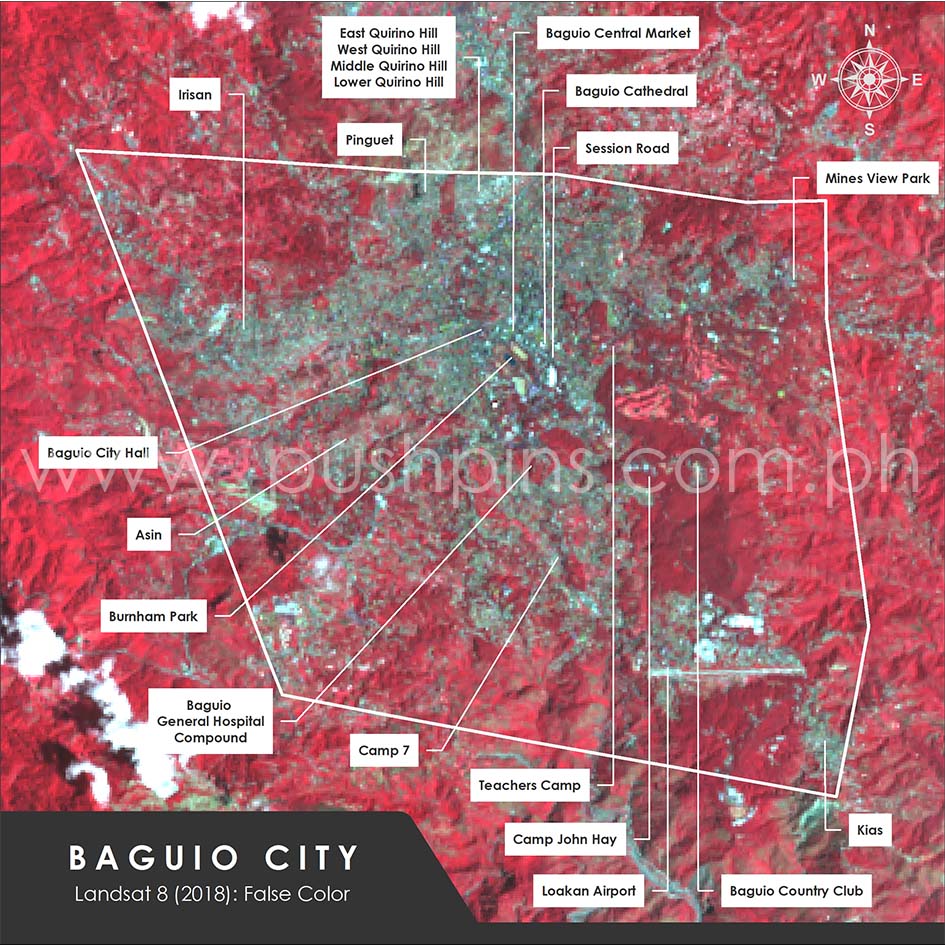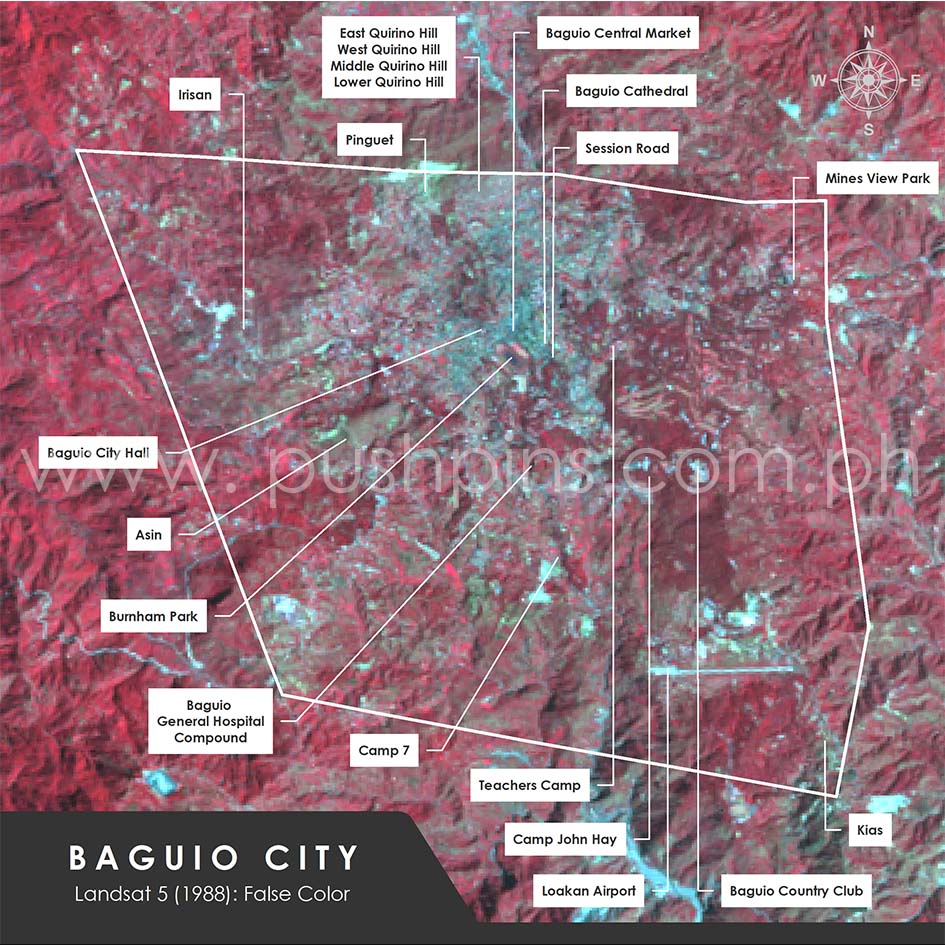In 1988, developed areas covered only about eight percent of Baguio. These were generally scattered all throughout the city. A big chunk was located downtown (i.e., Session Road, the City Market, the City Hall, the Baguio Cathedral, and all developments around Burnham Park). A relatively high density of built-up areas likewise occupied the surroundings of the Loakan Airport and the barangays of Pinguet and the Quirino Hills (East, West, Middle, and Lower).
Paving paradise
Fast forward to 30 years, and the developments have grown by more than double, particularly in the northern part of the city. Existing urban districts that stem from downtown Baguio have become denser and are encroaching on open spaces. Furthermore, small patches of built-up areas, such as those located in the northwestern part of the city, have mushroomed. Burnham Park, which used to be hemmed in only in its northern side, is now surrounded by various structures.
Outgoing Mayor Mauricio Domogan recently suggested to exempt Baguio from Presidential Decree 705, which states that “no land of the public domain eighteen percent (18%) in slope or over shall be classified as alienable and disposable.” This means that forested areas, which are considered public domain, cannot be utilized for developments, commercial or otherwise. However, even before Domogan’s request, the said presidential decree had already been revised to give more leeway to lands that have been used for agricultural and residential purposes provided certain parameters were met. This is, in part, due to the city’s terrain. Hence, completely exempting Baguio from the decree, as Domogan suggested, will open the city to further developments.
The figures below show the slope maps of Baguio derived from the Shuttle Radar Topography Mission (SRTM) Version 3.0 Global 1 arc second data. While both may look similar, the second map has been further simplified to better illustrate which regions are less than 18% in slope and which are equal to or above the threshold value.





